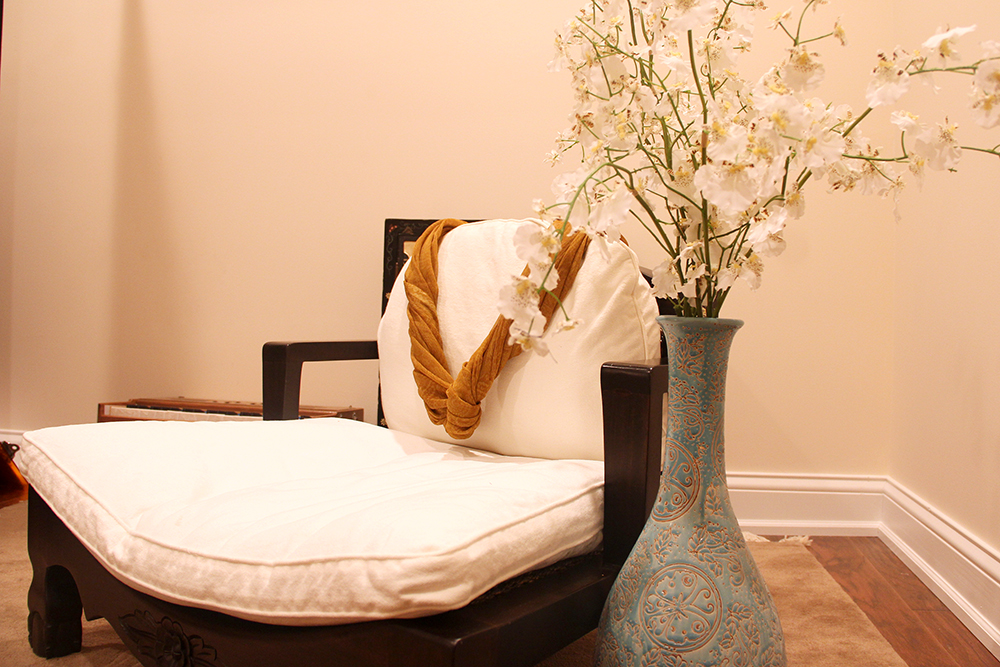Implement these lifestyle practices to promote well-rounded well-being
By Monica Yearwood
Ayurveda, which translates literally to “life knowledge,” is a traditional form of medicine that originated in India more than 5,000 years ago and continues to evolve today.
Ayurveda teaches that there are observable biorhythms in nature and by living in alignment with these biorhythms, we enhance all levels of our health. All of the lifestyle practices in Ayurveda are rooted in the ideal of individual and universal alignment.
In Ayurveda, we consciously use the external impressions in our life to facilitate an internal change. Our homes, in particular, give us the unique opportunity to use physical objects to enhance our health and awareness practices.
From the kitchen and bath to a designated space for contemplation, your home is the center of many Ayurvedic lifestyle practices that promote wellness and deepen self-awareness.
The Kitchen Apothecary
“Food is medicine” is a popular phrase in Ayurveda. Our diets are a primary vehicle for healing and disease remediation.
Spices play a primary role in Ayurvedic cooking. They are used to regulate digestion tendencies native to each constitutional type (dosha), and are loaded with antioxidants and other health properties. Cumin, coriander and fennel seeds, blended together in equal parts, assist with the elimination of toxins in the gastrointestinal tract and the blood. The mixture can be used as a tea or a spice mix for savory dishes. Purchase your organic spices in bulk and store them in decorative glass jars. Label your spices and cite some of their health properties. Leave them on the counter as a reminder of your relationship with your food.
Ghee (clarified butter) is an important anupana (vehicle) in Ayurveda, and carries the medicinal properties of spices and other foods deep into our tissues. Ghee also has a high heat index that makes it a superior cooking oil, and contains antioxidants and important essential fatty acids.
Ayurveda advises physical purification prior to meditation in the morning as part of a healthy daily routine.
There are many procedures to choose from, only one of which is the famed neti pot. It is not necessary to do all of the procedures. Choose one or two for your constitution or imbalance, for detoxification and rejuvenation, or simply because you are drawn to it.
The neti pot uses saline water to rinse the sinuses of debris that contributes to mucus, congestion and allergies. Thanks to its popularization by Dr. Mehmet Oz and other mainstream sources, neti pot has become one of the most well-known Ayurvedic and yogic cleansing tools.
Even so, relatively few people are familiar with nasya oil, an important follow-up procedure for neti. Nasya is the application of plain sesame oil or herbal oils. It can be used daily or during detoxification. Nasya after neti prevents dryness, irritation and cracking. With a Q-tip, apply one to three drops of plain, untoasted sesame oil to the inside of your nose, and inhale gently. Or you can purchase an herbal nasya oil from an Ayurvedic practitioner. Nasya oils can be formulated to aid chronic allergies, migraines, dryness and weakened immune system, among other purposes.
Ayurveda also teaches that it is important each morning to remove the buildup often visible as thick, white mucus coating the tongue with a specialized, U-shaped tongue scraper in order to prevent its reabsorption.
A thailam is a traditional medicated oil prescribed by Ayurvedic practitioners as a preventative and to treat numerous health complaints. The oil enters the body through the skin, and lymphatic and circulatory systems.
Ubtan is an exfoliant powder used after thailam application, in place of soap. An ubtan powder removes dead skin cells, stimulates the lymphatic system and encourages weight loss.
Designate a place in your home for a daily meditation practice.
To help elevate your practice, aromatic essential oils can be combined to create an intoxicating, anointing oil. Apply the oil to the third eye and crown of the head to induce higher states of consciousness.

























One Response to “Easy tips for creating the ideal Ayurvedic home”
December 29, 2013
fengshuinews.info » An Ayurvedic Home[…] illuminechicago.com/2013/12/17/easy-tips-for-creating-the… […]